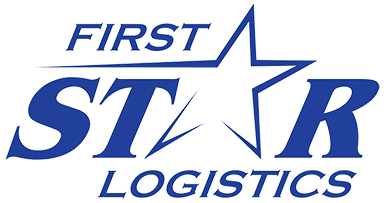Now that the world is moving on from the pandemic, supply chain trends are evolving, and there is a search for a new equilibrium. But it’s not a simple process. Geopolitical events, interest rates, consumer spending, and many other factors also impact the supply chain and transportation trends. So, what is in store for 2023? In this guide, we examine several supply chain and transportation industry trends to look out for in 2023.
1. Inflation and Interest Rates Will Stay High
Inflation and interest rates are increasing globally, and it does not look like they will come down anytime soon. In the United States, consumer prices took a big upward swing. According to the U.S. Bureau of Statistics, the 12-month percentage change of the Consumer Price Index was 6% as of February 2023. In March 2023, the Federal Reserve raised interest rates to 4.9%. While the increases are slowing down, the rates are unlikely to come down anytime soon.
2. There is Potential for a Recession
The goal of raising interest rates when inflation levels are high is to slow spending and economic growth. While this measure can help reduce inflation, it also has the potential to lead to a recession. To prepare for a possible recession, logistics executives need to be aware of the impacts a recession can have on the labor market. Workers will likely continue to seek higher pay, and strikes are more likely to arise if proper conditions are not met.
3. Businesses Will Likely Focus on Cost Containment
For many companies, the focus in 2023 will likely be on containing costs rather than striving for growth. Between the high interest rates, high prices, and the potential for a recession, getting a solid hold on expenses is a top priority. For example, to contain costs, shippers will likely look to save money on moving freight and examine customer policies and behaviors to look for ways to save money.
4. Businesses Become Less Reactive and More Proactive
The supply chain and transportation industry have received countless curve balls in recent years. Businesses have adapted to deal with challenges, even to the extent of pivoting directions entirely. As supply chain conditions stabilize, companies can begin to recalibrate and plan for the future.
5. Carriers May Lower Rates
From 2021-2022, consumer spending was high, there were labor shortages, and the supply chain was in a gridlock. During this time, carriers faced capacity was limited and kept rates high. In 2023, demand is leveling off, the supply chain is moving along better, and capacity is increasing. This is great news for shippers, who can now negotiate more favorable rates. For carriers, this likely means they will need to lower rates to compete for the business of shipping customers.
6. Digital Transformation Will Accelerate
Data, AI, and the IoT unleash many new opportunities for businesses to streamline supply chain and transportation logistics processes. These technologies increase visibility into workflows and outcomes and enable rich insights into operations. We will likely continue to see rapid digital transformation in transportation management, predictive maintenance, and many other facets of the logistics industry.
7. Businesses Respond to the Push for Sustainability
Government regulations, consumer demands, and evolutions in business best practices are all pushing the supply chain and transportation industry toward sustainability. Out of necessity and goodwill, companies must prioritize environmentally friendly solutions. Everything from purchasing raw materials to determining shipping arrangements will increasingly redirect to the most sustainable options as businesses begin to acknowledge that what is best for the planet is best for the bottom line.
8. Last-Mile Delivery Options Will Improve
The term last-mile refers to the final leg of a product’s journey that typically involves direct delivery to the end user. Over the last few years, the standards for both B2B and B2C deliveries have increased exponentially. Customers expect prompt delivery, often in just one day, with clear communication along the way. Companies will likely look to improve last-mile delivery capabilities and customer service to fulfill these expectations.
Why First Star Logistics?
First Star Logistics is a global logistics provider with a unique asset-based approach. Our core business is arranging and securing space for freight transport between states and countries using common carriers such as trucks, railroads, and ocean liners. Our clients benefit from a comprehensive North American network and global reach, along with time and cost-saving technology that delivers quality results. Our brokerage agents benefit from our dedicated management team whose main goal is to offer complete back-end support across departments and empower agents to succeed.
To learn more, contact First Star Logistics today!



